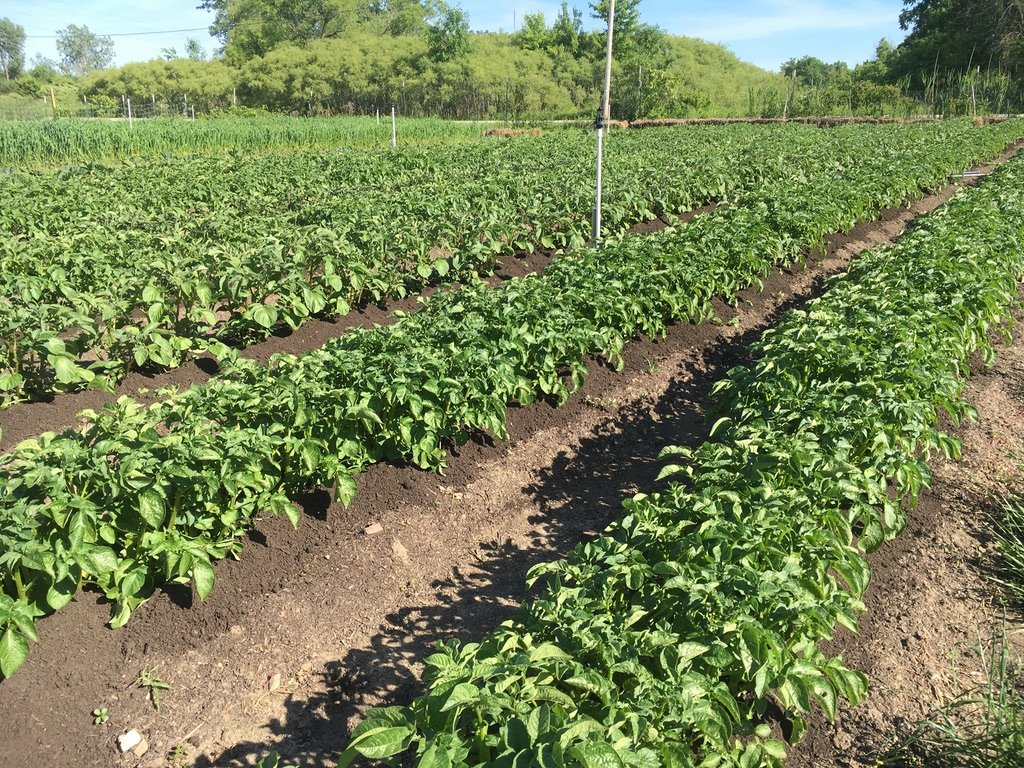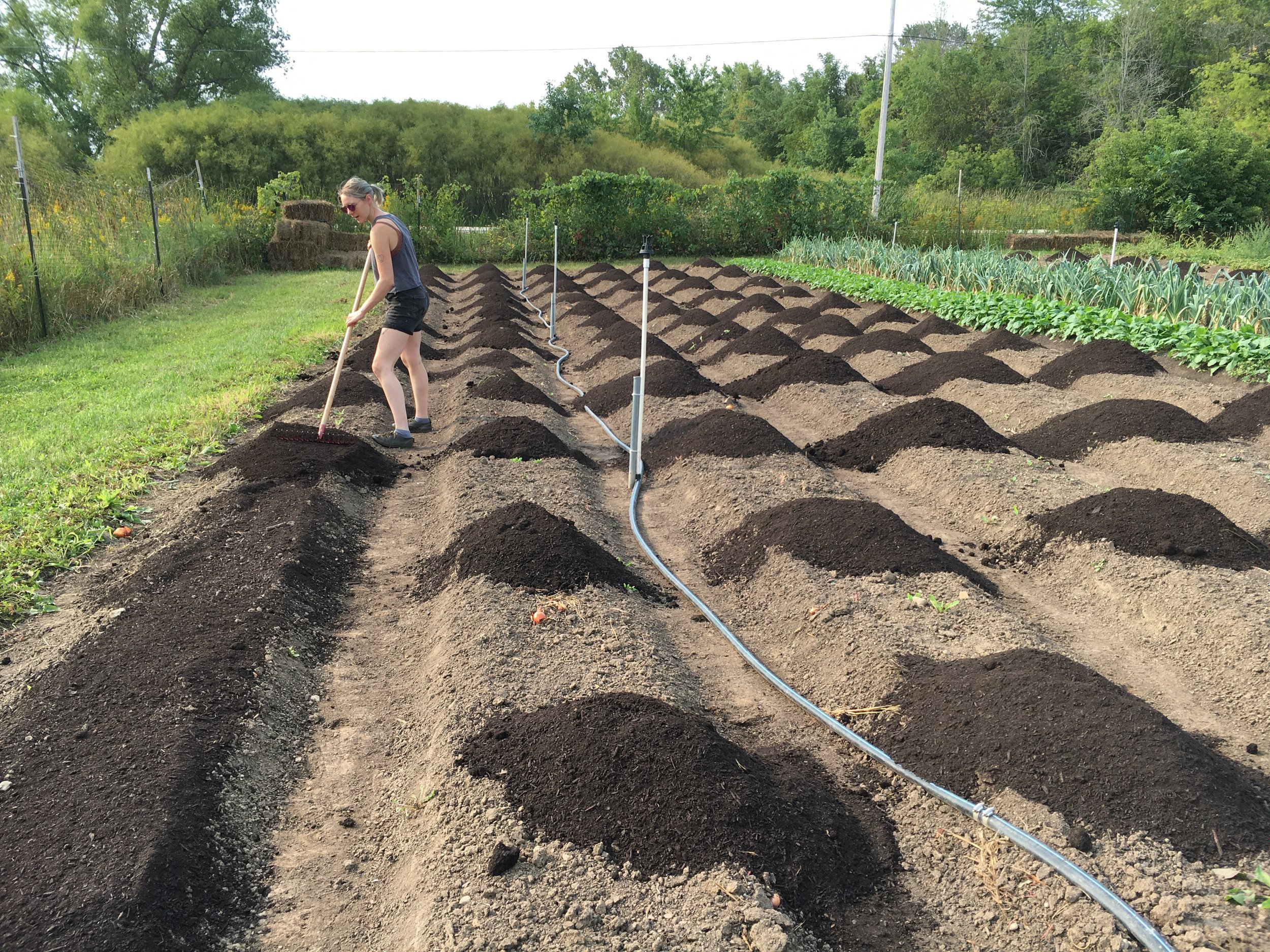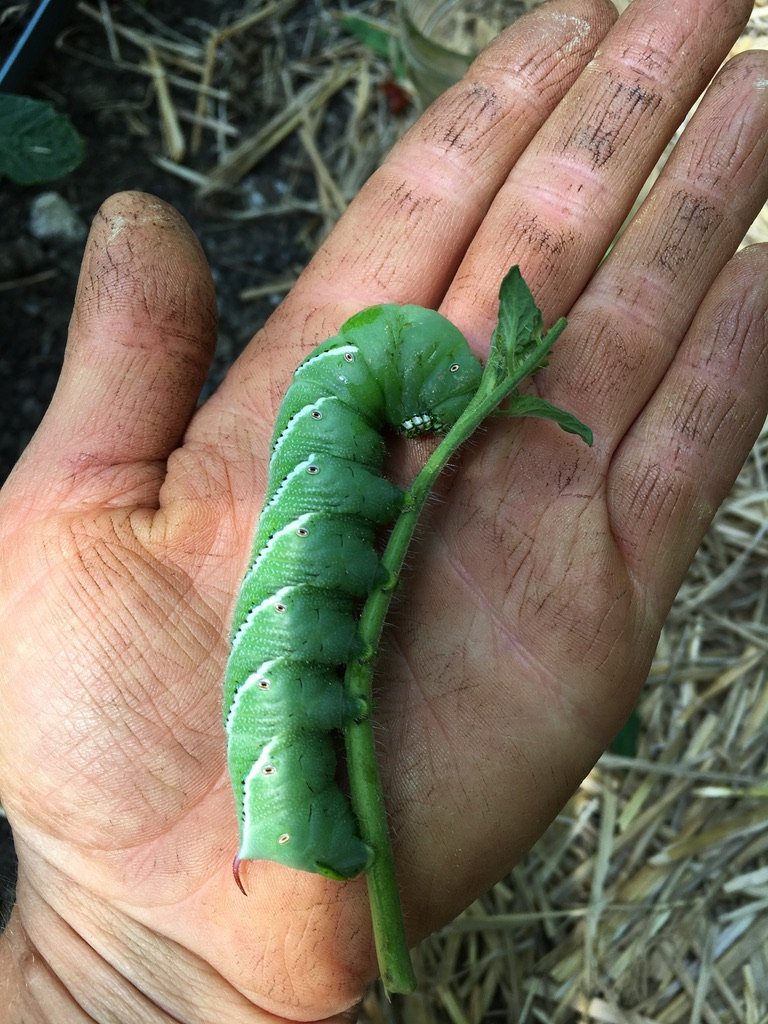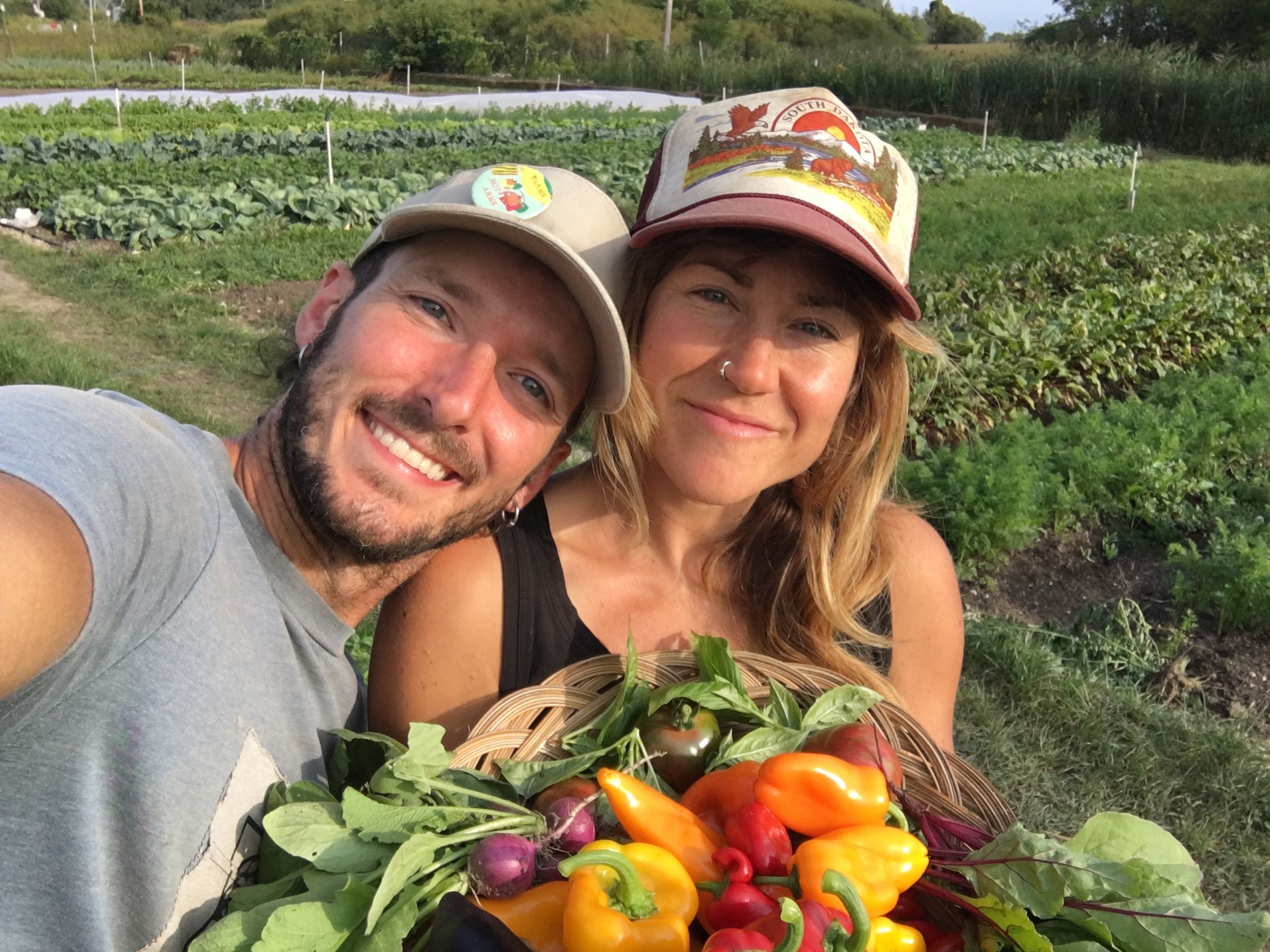
growing PRACTICES
As annual vegetable farmers with a short growing season, we ask a lot from our soil. We need the soil to hold onto nutrients and water, provide a balanced environment for our diversified cropping system, and for this all to happen within the frost-free days of every year. Recently, we’ve begun to see our role not so much as vegetable growers, but as soil growers. The soil, not the annual crops, will be what holds our land’s ecosystem together. If we have a balanced, living soil medium, our vegetables and us will thrive.
PERMANENT RAISED BEDS
When we first broke ground on this land, we used the help of a walk-behind tractor to plow furrows between our “permanent raised beds.” Five seasons later, we have 100 beds, each 75 ft x 2.5 ft and footpaths between each bed, measuring at 1.5 ft. These beds were established once and are tended and maintained by hand on a regular basis. We imagine that each bed is a living organism, an organized structure that can react, grow, and strive for balance. These beds make up the larger farm system which our food is grown in.
In order to promote the vitality of each bed, we disturb the soil as little as possible. Since farming became industrialized and the use of heavy machinery became widespread, we’ve seen major erosion of topsoil and a drastic lack in the land’s ability to retain water and nutrients. Turning over the soil with tractor implements can certainly make quick work of transitioning from one crop to another, but we’ve found it to be unnecessary in our system. Our beds maintain their structure easily with solely the aid of hand tools.
TOOLS AND IMPLEMENTS
Though we have a walk-behind tractor that was essential in creating our beds at the beginning of our first season, the tools we use are primarily hand tools. Now, the tractor is mostly used with its mowing implement to mow vegetable crops and cover crops. Mowing leaves the organic matter as “mulch” on top of the bed and living roots in the soil below, composting in place with the aid of microorganisms. Being so close to Lake Michigan, we have a heavy clay soil that can become compacted very easily. This is a big reason why we opted for permanent footpaths, giving us a place to stand so we do not compact our growing space. Our main tool to prevent and alleviate soil compaction is a broadfork. Its long, thin tines pierce the soil and lift it slightly - without inverting it - so that air, water, nutrients, and worms can move through the soil with greater ease.
We use hori-horis, trowels, and digging forks to remove weeds from the beds, and occasionally will run an oscillating hoe through the bed if the weeds are small. For path management, we use a wheel hoe and mulch the paths with straw whenever possible. To prep our beds, we sprinkle any needed amendments on the bed top and use a wheel barrow to apply compost from our friends at Blue Ribbon Organics in Caledonia. We use a rake to spread the piles, and we’ve found that this technique is enough to prevent stratification of nutrients and is the least distributive to the soil structure and any microbial activity.
“PEST” AND “WEED” PRESSURE
As organic farmers, we’re constantly confronting the juxtaposition between crops and weeds. Any time we need to get rid of weeds, they are pulled by hand or hand tools. This is very labor intensive, so we try to weed only what is necessary. It’s taken 5 years but aesthetically, we’re starting to accept (and perhaps even enjoy) the presence of some of the familiar and less problematic “weeds”. In fact, some of these plants can be highly complimentary to our vegetable crops; creating a leaf canopy to retain water during a dry period, having long tap roots that aerate the soil, or providing a medium for root exudates to feed the microbiota in the soil.
In many cases, pests can do a lot more damage much quicker than an annoying weed. We try to be as preventative as we can, using crop rotation and proper planning in the off-season to anticipate and respond to the previous season’s pest pressure. When the fruits of planning are exhausted, we turn to row cover to act as a barrier from insects that land on the crops. Row cover certainly isn’t foolproof, and its questionable whether its worth the hassle of a massive piece of fabric blowing around, ripping, and getting tangled in our legs and tools. When row cover is out of the question, we hand pick pests and feed them to our chickens (like the hornworm on the right). Certain insects, birds, and bats can be beneficial as predators to certain insects, so as we learn more about who lives in our area and what they like, we’re trying to create more habitats for them.
LABOR AND LIFESYLE
We’ve noticed a culture in farming that pushes us not only beyond the limits of the land, but of ourselves - and then demands we take pride in doing so. Farming, like many lines of work, requires long days and physical labor, which can quickly deteriorate the mind and body. We have the privilege to be able to pursue what we love, but we want to be able to do it for a long time. That being said, we take seriously that sweet “work-life balance”; crushing farm tasks during the workday, and calling it quits when 5 pm rolls around. This requires setting boundaries, careful planning, and being very intentional about how we spend our time and money. We love what we do and couldn’t be more grateful to have the opportunity to do it. Be it our workshares, roommates, neighbors, family, friends, CSA members, or market patrons, so many people go into making this life possible. It takes a VILLAGE!
COMMUNITY INVOLVEMENT
For 7 growing seasons, we have prioritized a human-scale farming style that reflects our values, while putting into practice methods that take seriously the need and right for farmers and farm workers across the globe to have a healthy and dignified life. Rooted in the adage that "an injury to one is an injury to all," Village Farmstead tasks Sam with centering the interconnectedness of farmworkers here and abroad to farmers such as themselves. For over a decade Sam has worked with, and simultaneously studied, several food and farm-based organizations in the Milwaukee area, including UW-Extension Milwaukee County, the Milwaukee Food Council, and Milwaukee Urban Gardens. Applying anthropology and political-economic theory and methodology, Sam aspires towards a critical and unapologetically radical understanding of a range of topics such as: Alternative Food Movements, the so-called “Local Food Movement” and "Food-Sovereignty", Agrarian Marxism, Agrarian Change and Class Dynamics, and Critical Development Studies. Currently, Sam is serving as the chair of the Milwaukee Food Council AND the President of the Wisconsin Farmers Union - Milwaukee Waukesha chapter.
If your Organization or Campaign would like to partner with Village Farmstead please email Sam.




